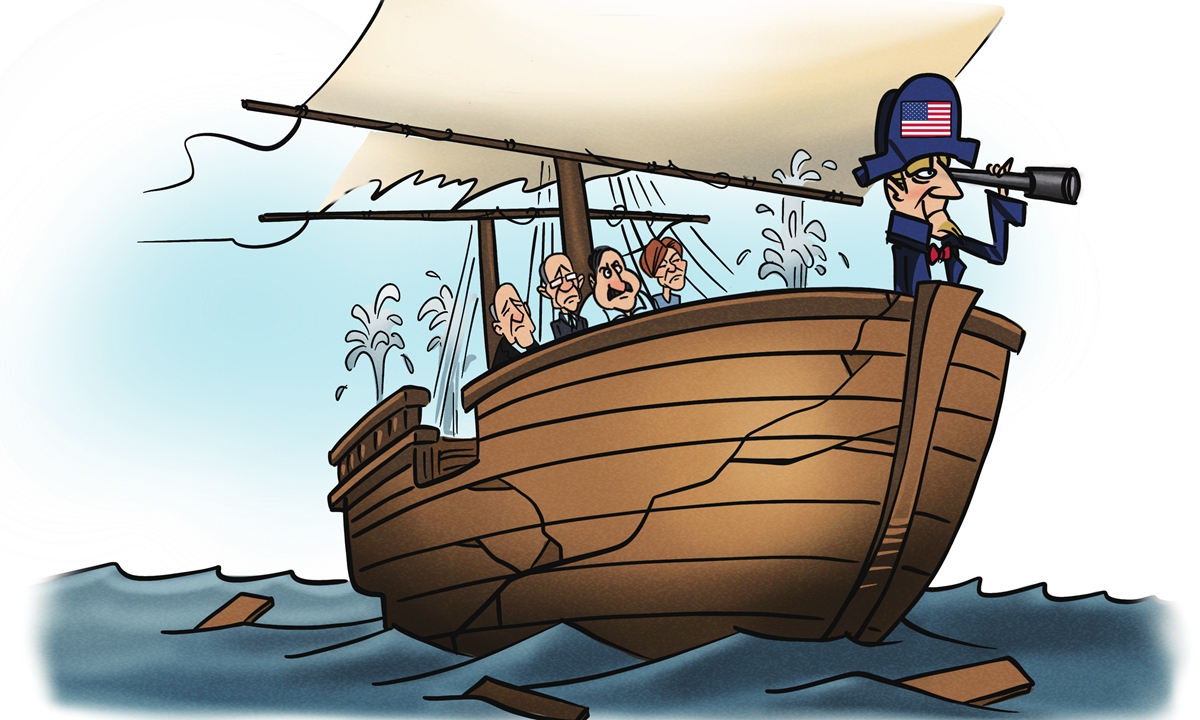Global Times (10 January 2022) – US think tank the National Bureau of Asian Research (NBR) released a “special report” on Friday. This report, entitled “Meeting China’s Military Challenge: Collective Responses of US Allies and Partners,” gathered opinions of experts from six US allies and partners in the Asia-Pacific region – Japan, Australia, India, the Philippines, Vietnam, and the island of Taiwan – on how to deal with China’s “military challenge.”
At first look, this NBR special report looks no different to similar reports released by other US think tanks: It does nothing more than hype the “China threat theory” and call for containing China. But the six US allies and partners are not chosen randomly. They are either countries and regions within the first island chain that are feeling the “increasing threat” of China, or those beyond the first island chain that “are increasingly vulnerable to Chinese coercion.” With a clear bias to provoke hostility toward China, this is probably what makes the report so “special.”
According to NBR’s website, the second-largest funding of the organization comes from the US government (16 percent).
“NBR is a think tank focusing on Asia-related issues, especially those involving China. It slightly tilts toward the rightists, so just like most US think tanks, it is also a critic of China,” said Chinese military expert and commentator Song Zhongping. He also pointed out that the report may have an impact on US lawmakers since NBR is quite influential.
When writing about this NBR report, a VOA Chinese article uses the headline claiming that “US allies in Asia-Pacific have both common interests and differences in response to China’s military challenge.”
But we would like to argue that in reality, the differences are much greater than the common interests.
As China’s national strength grows, some countries in the Asia-Pacific region started to feel the “threat” of China’s military strength. However, the US and its allies do not share the same top concern regarding China’s “military challenge.” The NBR report notes, for example, that Tokyo is more worried about the growth of Beijing’s military power in some new domains, such as cyber and space, while the greatest concern of Manila is about Beijing’s growing maritime power, particularly in the South China Sea.
The deeper reason is that each of these six allies and partners has its own interests despite all of them needing Washington’s helping hand somehow. According to Song, Japan wants to maintain its position as the leader in Asia. At the same time, it also wants the US to help it protect what Japan calls “Senkaku Islands” – It is known otherwise as the Diaoyu Islands, which is part of China’s territory – and maintain the median line between China and Japan in the East China Sea. Australia is more interested in becoming a world power to maintain regional order, while India is hoping to gain a more beneficial position over the China-India border disputes. The Philippines and Vietnam aim to use external forces to contain the “threat” from China in the South China Sea.
On the other hand, the US interest is to maintain its global hegemony and contain China’s development. But the US’ allies and partners clearly know that China’s rise is unstoppable, so Washington’s attempts to go against reality to contain China actually violate the interests of US allies and partners in the Asia-Pacific region. And as it is quite impossible for the US to give up its impulse to unite its allies to contain China, divergences between the US and its allies will continue growing.
Apart from that, US allies are wary of the US because of its constant betrayals of them.
“Facts have proven that the US is capable of doing that – just look at what happened in Iraq, Syria and Afghanistan. Washington will abandon its allies and partners when they appear to be no longer of use,” commented Song. “This is the embodiment of ‘America First.'”


